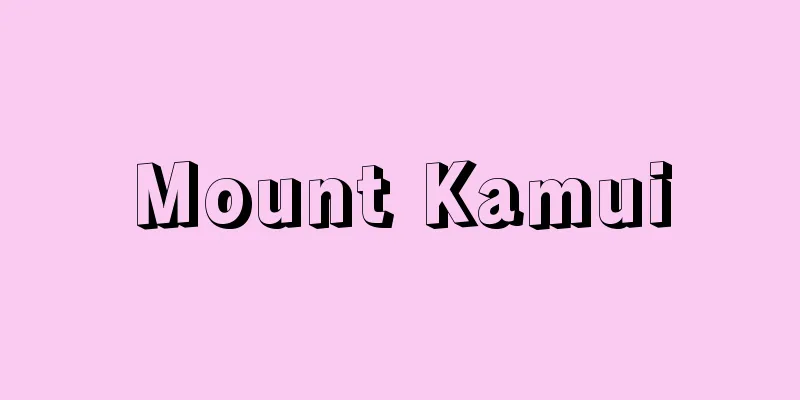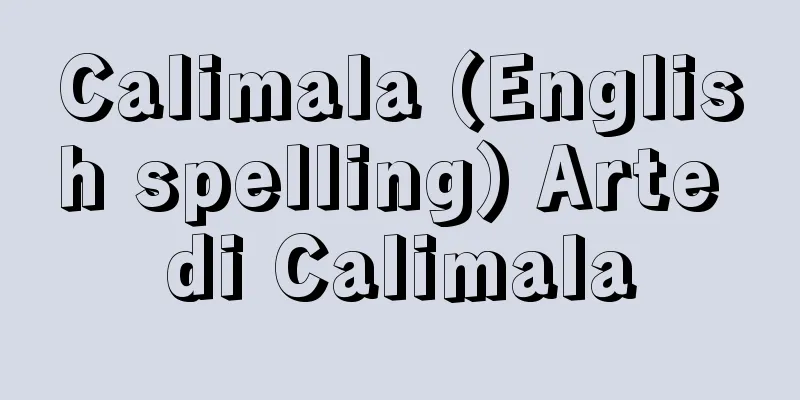Kayayama Shell Mound

|
A shell mound from the end of the early Jomon period, located in Sawara, Yokosuka City, Kanagawa Prefecture. It is famous as a landmark site for the so-called "Kayama-style pottery." It was reported to the academic world by Numata Yorisuke in 1897 (Meiji 30), and was investigated by Oba Iwao, Akaboshi Naotada, and others at the end of the Taisho era. It was designated as a Kanagawa Prefecture historic site in 1954 (Showa 29). It is located about 700 meters west of JR Kurihama Station, and the shell layer is deposited on a slope of about 80 square meters on the north side of a long and narrow plateau about 40 meters above sea level. It is mainly composed of oysters, asari clams, mussels, red clams, litchi, and other marine shells, and measures 4 meters thick at its thickest point. Animal and fish bones such as wild boar, deer, dolphin, sea bass, and black porgy are also prominent. The pottery has fiber traces and shell marks, but the patterns and shapes vary depending on the stratum, and they are distinguished by type. [Isamu Okamoto] Source: Shogakukan Encyclopedia Nipponica About Encyclopedia Nipponica Information | Legend |
|
神奈川県横須賀(よこすか)市佐原に所在する縄文時代早期末の貝塚。いわゆる「茅山式土器」の標式遺跡として有名である。すでに1897年(明治30)沼田頼輔(よりすけ)によって学界に報ぜられ、また大正末年には、大場磐雄(いわお)、赤星直忠(なおただ)らによる調査が行われた。1954年(昭和29)神奈川県史跡に指定された。JR久里浜(くりはま)駅の西方約700メートルの位置にあり、標高約40メートルの細長い台地の北側約80平方メートルほどの斜面に貝層が堆積(たいせき)している。マガキを主体とし、アサリ、ハマグリ、アカニシ、レイシなどの海水産の貝殻からなり、厚いところで4メートルを測る。イノシシ、シカ、イルカ、スズキ、クロダイなどの獣魚骨も目だつ。土器は繊維痕(こん)をもち、貝殻条痕を施したものであるが、文様、器形は層位により差があり、型式的に区別される。 [岡本 勇] 出典 小学館 日本大百科全書(ニッポニカ)日本大百科全書(ニッポニカ)について 情報 | 凡例 |
<<: Kayamonori (Kayamo Moss) - Kayamonori (English spelling) whip tube
Recommend
External hardness - External hardness
This is an argument that emphasizes the restorati...
Shikimic Acid - Shikimisan
( 3R , 4S , 5R )-trihydroxy-1-cyclohexene-1-carbo...
Curry (English spelling)
A sauce made by mixing powdered spices to give it ...
Arachosia (English spelling)
The name given by the ancient Greeks to the Kandah...
Exocytosis
…Enzymes in metabolic systems are not distributed...
Kyosho (Era name)
...Then, in 84 (Genchu 1, Shitoku 1), the Kōtok...
Wilkes Incident - Wilkes Incident
An anti-establishment movement that developed in t...
public park
… [History of the park] Ancient Greek and Roman c...
Azuma play song - Azuma play song
...A type of gagaku music. The songs sung there a...
Side Street - Wakikaido
Also called a side road or side street. In the Edo...
Proxima Centauri
The star in the constellation Centaurus is the clo...
Nisba
...There are many cases where the title of a job ...
Sukunahikona no Mikoto - Sukunahikona no Mikoto
Also known as Sukunabikone, Sukunamikami, and Suk...
Kanme aratamesho - Kanme aratamesho
In 1712 (Shotoku 2), the Edo Shogunate establishe...
Kidney stones
This refers to urinary stones in the renal pelvis...









